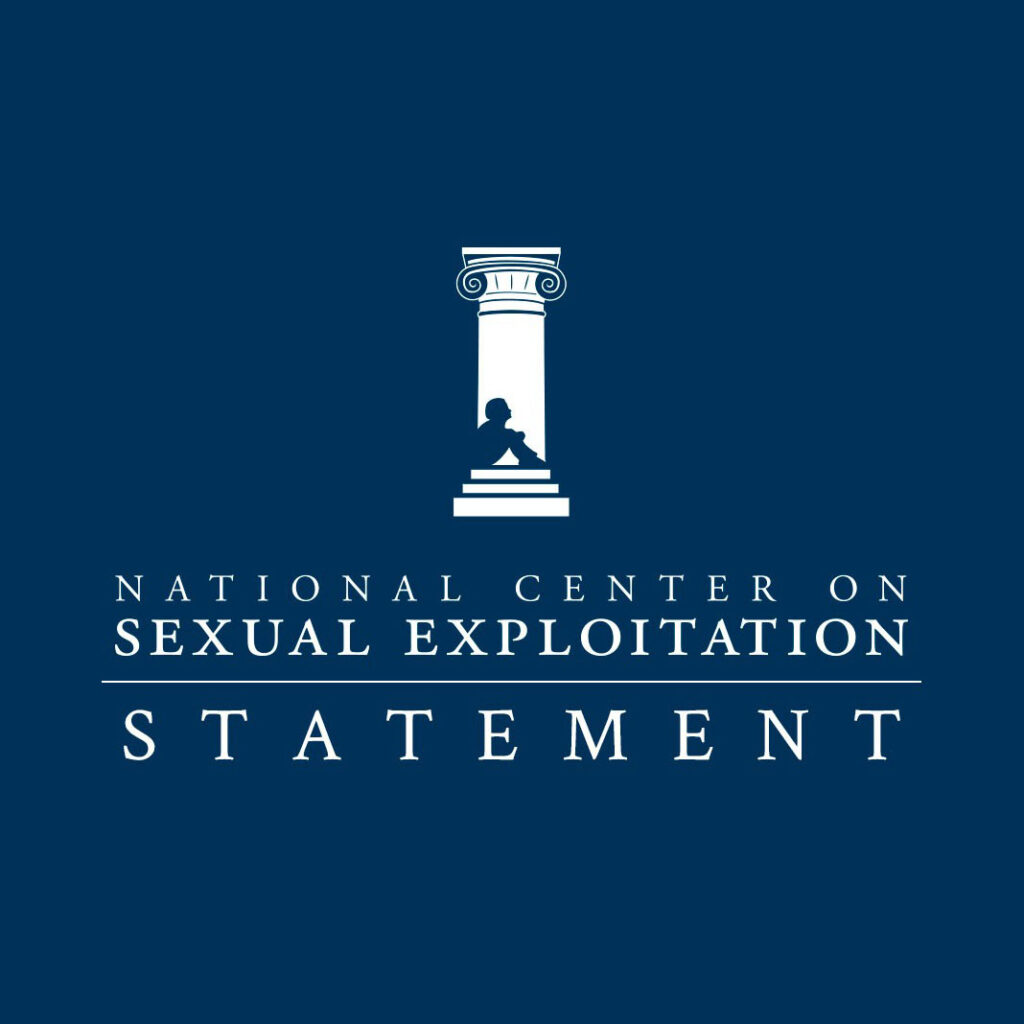Document version:
Reducing Human Trafficking By Prostitution Law Reform Summary of Oral Presentation to 15th International Symposium of the World Society of Victimology 5-9 July 2015
by Mr Peter Abetz B.Agric.Sci.(Hons); B.D.; MLA
Member for Southern River Parliament of Western Australia
Email: peter.abetz@mp.wa.gov.au
Note current contact details: peter.abetz@gmail.com
Biographical background:
My interest in prostitution arose in 1984 while working as a pastor in Victoria. In that year the Victorian parliament legalised prostitution. Within months there were two gaudy brothels in my suburb of Dandenong. Seeing the mushrooming of the sex industry in Victoria was of concern to me as every prostitute is someone’s daughter, and no one aspires to be a prostitute.
In Western Australia in the 1990s I was involved in counselling women in the process of leaving the sex industry. This gave me an “insiders” perspective on the prostitution trade, and what really goes on for women working as prostitutes.
I also ran a drug rehabilitation support group for a number of years in the late 1990s to 2001, and this gave me insights into the reality that many drug addicts are so desperate for the next hit, that they are willing to prostitute themselves.
In the past 12 years I have travelled extensively to research prostitution issues. I have travelled to The Netherlands and accompanied police on their prostitution law enforcement patrols, and met with senior law enforcement officers and discussed the workings of their laws with working prostitutes and the police. I have also met with police, government officials and former prostitutes in Germany, France, New Zealand, Finland, South Korea, Russia and Sweden.
In 2014 I undertook a 3 week study tour to France, Sweden and South Korea, looking at prostitution law reform issues and human trafficking, meeting with proponents and opponents of the Nordic approach to dealing with prostitution, meeting with NGOs running successful exit programs, and government officials.
Since September 2008 I have represented the electorate of Southern River in the West Australian Parliament.
Respectfully presented for your consideration.
Peter Abetz
July 2015
Reducing Human Trafficking by Prostitution Law Reform.
Introduction:
In most societies there is a small number of women, who are so desperate for money, that they are prepared to sell themselves for sexual favours. It is generally accepted that no society has succeeded in eliminating prostitution.
In an attempt to “protect” the women involved in prostitution, some governments have chosen to decriminalise or legalise prostitution.
As with prostitution, no government has succeeded in eliminating domestic violence. Domestic violence has probably been around even longer than prostitution, and is possibly even more difficult to eliminate from society. Yet no one is proposing that we should legalise or regulate domestic violence to make it safer. The reason for this is quite simple: Domestic violence is seen as totally unacceptable in our modern society. As a result, we invest significant police and social work resources into seeking to reduce the prevalence of domestic violence. Likewise, I posit that in the light of the nature of prostitution, there should be no place for prostitution in our modern society.
Wherever prostitution has been legalised or decriminalised in the world, it has resulted in a significant increase in demand, as the stigma of doing something illegal is no longer present. (1)
This increased demand has created a shortage of women to service the demand. This creates the perfect opportunity for organised crime to move in and supply the demand by trafficking young women from other places. Trafficking women for sex is more profitable than drug dealing as a woman can be sold many times a day, whereas drugs can only be sold once.
The Nature of Prostitution
- 70% of women involved in prostitution for more than 2 years suffer from Post traumatic Stress Disorder (PTSD). (2)
- Over 90% of prostitutes use drugs to cope with their physical pain. (3)
In Australia many women leaving prostitution never re-enter the full-time workforce because of mental health issues, resulting in a significant cost to the social security system. (4)
- Rehabilitation of women who have worked in prostitution can take up to 6 years, because of the social, emotional and spiritual damage prostitution causes.
- Legal brothels have not reduced the incidence of rape and violence against prostitutes (5)
- 95% of women in prostitution say they would exit the industry if they could.(6)
- A long term study in France found women in prostitution have a 60% reduced life expectancy compared to the general population. (7) Studies in other countries have reported a 40% reduction in life expectancy for women in prostitution.
The four approaches to addressing prostitution
- Prohibition
– criminalise all aspects of prostitution as in much of the USA:
- Legalise
– Victoria, Germany, Netherlands
- Decriminalise
– NSW, New Zealand
(favoured by Scarlet Alliance)
- Nordic Model
– Sweden since 1999
– adopted by Norway, Iceland, Canada, Ireland etc
– endorsed by EU Parliament in Feb 2014 (8)
Every jurisdiction in the world that has legalised or decriminalised prostitution has witnessed a massive increase in demand for sexual services.
Legalising Prostitution Increases Demand
- While precise numbers are difficult to obtain, given the nature of the sex industry, Victoria has experienced a 20 to 40 fold increase in the size of their sex industry since legalising it in 1984. Currently there are approximately 100 legal brothels, 400 illegal, not to mention escorts, solo operators or street prostitution. Trafficking has also become a significant issue. (9)
- Each week in Victoria, some 60,000 men buy women’s bodies in prostitution • Germany now has at least 200,000 women in prostitution – sex worker organisations and police say it is closer to 400,000
- Because of intense competition for “new” services, some German brothels now offers sex with animals. (10)
- Decriminalisation/legalisation invariably increases organised crime involvement in prostitution
- Police experience greater difficulty in fighting organised crime as brothels are the perfect place to launder proceeds of other organised crime
Legalising Increases Human Trafficking to meet the demand
- Every jurisdiction which has decriminalised or legalised prostitution has experienced significant growth in human trafficking, more so than those countries which have not legalised or decriminalised prostitution.
- Human trafficking for sexual purposes is out of control in Europe
- Dutch police acknowledge that 85-95% of women in window prostitution are trafficked women.
- Russian police state that 35,000 to 50,000 Russian women are trafficked out of Russia every year, with only 2% ever returning.
- Germany is said to have some 200,000 prostitutes, the majority foreigners, while police suggest it is double that figure.
- Germany and The Netherlands are reviewing their legalised approach in large part due to the inability to control human trafficking.
Australia: High growth of the sex industry has led to pimps forging links with Asian organised crime to provide enough “product” – compliant Asian women – for the Australian market. (Asian women are the “most popular” with the men.)
Prostitution and human trafficking are two sides of the same coin.
Reasons cited for legalising prostitution in Victoria in 1984:
- Do away with illegal prostitution
- Prevent police corruption
- Prevent women in prostitution from being harmed
Not one of these objectives has been achieved:
- Now have over 400 illegal brothels
- Local Govt officials caught being bribed to warn of brothel inspections
- One study found 40% of men don’t use condoms; physical safety is still the biggest concern of women working in legal brothels; murders still occur
German police say that not one of the goals of the 2002/6 German legislation have been achieved. Likewise in Finland, The Netherlands, New Zealand.
New Zealand – decriminalisation
- Prostitution Reform Act 2003 decriminalised prostitution.
- Made provision for SOOBS (Small owner operated brothels), which allow up to three women to work from a house in the suburbs without requiring any permits or registration – hence no record as to how many there are.
Scarlet Alliance and others claim that the New Zealand model of decriminalising is the ideal legislative frame work, asserting that it has not increased demand.
The facts are:: – no way of knowing how many SOOBS are operating in the suburbs.
– Many very large brothels began operating such as the 100+
woman brothel in Gore St, Auckland operated by Chow Bros (11)
– PM John Keys: “The argument was that it would eliminate all the street workers and underage people, particularly girls, and the
reports that we see in places like South Auckland is that it hasn’t actually worked. “I think it’s been marginally successful, if at all.” (12)
Finland
In 2006 passed an adapted version of the Nordic legislation, but only made it an offence to purchase sex from trafficked persons – has proven ineffective in reducing trafficking and prostitution.
South Korea
In 2004 passed Nordic type legislation, making it an offence to purchase or attempt to purchase sexual services, but also criminalised the women selling sex. However the law is not being enforced. Well funded exit programs are operational and in 2014 were assisting 500 Korean women, but 80% of women in prostitution are Philippino, and very few are in rehabilitation programs.
Change of Direction in Europe
- The regulating / decriminalising of prostitution in Germany and The Netherlands is widely seen as a failed experiment
- Der Spiegel (German news magazine) ran a series of articles in May 2013 claiming that the legislation had effectively led to state promoted human trafficking
- The toleration of prostitution is increasingly being challenged
- The notion that women ”choose” to be prostitutes (promoted by so called sex workers collectives) is increasingly viewed as untenable. (13)
- The view that prostitution involves the exploitation of vulnerable women is now the dominant feminist and public view in Europe.
- Canada and Ireland have recently passed Nordic type legislation
- European Parliament passed a non-binding resolution in Feb 2014 calling on member states to seriously consider introducing Nordic type legislation and to work to eliminate prostitution.
Nordic Approach to Prostitution
The feminist movement in Scandinavia changed its view from “it is a woman’s right to sell her body” to the view that “…prostitution is the exploitation of vulnerable women by men with money.” .
Women in prostitution are seen as vulnerable persons who are being exploited by those who pay them for sex.
The issue of prostitution is seen as one that affects gender equality. In 1999, Sweden passed legislation which resulted in:
- Working as a prostitute is no longer an offence.
- Purchasing, and attempting to purchase sexual services is criminalised, as is pimping, knowingly leasing an apartment for prostitution, or renting a hotel room knowing it will be used for prostitution and any other activity that facilitates prostitution.
- The closure of the 500 brothels operating at the time
- Reduced street prostitution by at least 50%
- Brought about a cultural change in that it is now no longer seen as acceptable to use a prostitute, with a resultant decline in prostitution demand.
- The formal evaluation of the Swedish legislation after 10 years has concluded that it has had a very positive effect in reducing the demand for sexual services. (14)
- Police say it has resulted in many organised crime groups leaving Sweden, as it is too difficult to do business there.
Arguments against the Nordic Approach:
Those opposed to the Nordic approach to dealing with prostitution usually present one of two argument:
- They argue that “… a woman should have the right to sell her body if she so chooses”(15). The reality is that the vast majority of women that sell their body, do not see it as a “right” but do so as a desperate measure, as they see no other way to survive.
- There is no statistical evidence that the Nordic Model works Concrete statistics are difficult to obtain for prostitution, as surveys depend on self reporting, which is notoriously inaccurate, especially for the cohort of persons one is dealing with in prostitution. But the statistics are very clear that legalising prostitution leads to increased demand, whereas no one has produced any evidence suggesting that the Nordic approach has increased demand. Anecdotal evidence is very strong that it has reduced prostitution (16). The fact there are no brothels in Sweden means that clients have to go to much greater effort to purchase sex than in countries where brothels are legal and therefore easily accessible.
- It has driven prostitution underground. The notion that prostitution can be “driven underground” is a myth: All businesses require visibility of some kind in order to survive. The police in Sweden consider this assertion laughable, saying, “If clients can find them, so can we!” Throughout Europe both brothel and non-brothel prostitution has moved to advertise on the internet. Clients are directed to phone a mobile phone number and are directed to an address. Police monitor the internet, make bookings, but send female social workers, who encourage the woman to seek rehab. If this fails undercover police are used to apprehend or warn off clients. The law is actively enforced with around 300 men prosecuted each year in Sweden.
The Palermo Protocol to which Australia is a signatory states that “ state parties shall adopt or strengthen legislative or other measures, such as educational, social or cultural measures, including bilateral and multilateral cooperation, to discourage the demand that fosters all forms of exploitation of persons, especially women and children, that leads to trafficking.
Conclusion:
- Human trafficking and prostitution are two sides of the same coin
- In a society striving for gender equality, prostitution, like domestic violence, is unacceptable.
- Total prohibition, legalising and decriminalising have failed to reduce the number of women in prostitution, and allow human sex trafficking to flourish.
- The Swedish (Nordic) legislation, with its emphasis on penalising the purchaser and providing well resourced exit programs is the only legislative approach that has resulted in a major reduction in prostitution and human sex trafficking.
Some quotes to reflect on:
It is generally agreed that the prostitution of children and adolescents is a heinous crime with no place in society. It is a crime intrinsically requiring the kind of violence, degradation and disassociation no person should be subjected to. Yet when the child turns 18 this abuse is repackaged as lawful prostitution, and becomes legally acceptable. As such, the legitimacy of attempts to eradicate child prostitution are instantly diminished, as society is effectively sending the message to prostituted children to “come back soon”
Anna Jennings, Coffee, Laneways and Child Prostitution: eradicating Melbourne’s hidden shame, Perspective Youth Journal Vol 4 Winter 2009 UNITED NATIONS YOUTH ASSOCIATION OF AUSTRALIA
Of course I’m against trafficking – but ordinary prostitution is something else.
In What way? Of course there are endless variations – from “only” having to receive a few prostitution perpetrators a month (perhaps at some fancy hotel) to being forced to receive 15 johns every night at a brothel ruled by a trafficking pimp – with countless other variations in between. But the fact that the degree of suffering or coercion varies doesn’t change the phenomenon itself – al prostitution is still based on a prostitution perpetrator buying access to another person for sexual use.
The phenomenon of prostitution in itself is based on the expectation that the one satisfying the prostitution perpetrator does not want to have sex with him. The prostitution perpetrator is forcing is own sexuality into somebody else (but buys himself “free” of responsibility).
That’s what prostitution is.
Speaking of Prostitution – Arguments and counter arguments about prostitution. http://www.kvinnofronten.nu/eng/speaking-of-prostitution.htm . This publication provides answers to some 50 objections to the Swedish legislation.
Footnotes:
1 Does Legalised Prostitution Increase Human Trafficking? , So-Young Cho et al.; World Development Vol 41,– 67-82, 2013.
2“Prostitution and Trafficking in Nine Countries: An Update on Violence and Post Traumatic Stress Disorder.” Farley et al. Journal of Trauma Practice Vol 2, No ¾, 2003, pp33-74.
3 Personal Communication with Linda Watson, former Madam in Perth, who now runs an exit program, and from information provided to me by women who have worked in prostitution in both Perth and The Netherlands.
4 Personal observation from discussions with former prostitutes and exit program operators
5 Since 1999 Sweden has had 1 murder of a woman working in prostitution, during the same time period, the Netherlands has had 112. The Netherlands has approx. double the population of Sweden.
6 Farley et al op.cit
7 Conveyed verbally to author by Ms Elisabeth Moiron-Braud, Secretary General, The International Mission For Protecting Women Against Violence and Human Trafficking (MIPROF) in Paris on 15th April, 2014.
8 New Zealand is the only jurisdiction that officially claims that it has not experienced this increase, but prostitutes acknowledge that demand has increased, and the number of brothels has increased. SOOBs (Small owner operated brothels) do not require registration, and prostitutes do not need to be registered, so there are no official statistics to monitor, other than the number of registered larger brothels.
9 At a meeting with Ministry of Gender Equality and Family officials in Seoul, Korea on 1st May, 2014 they expressed concern at the number of women from south Korea who are being trafficked into the sex industry in Melbourne and Sydney.
10 http://www.dailymail.co.uk/news/article-2352779/Bestiality-brothels-spreading-Germany campaigner-claims-abusers-sex-animals-lifestyle-choice.html#ixzz2Z2btCx8L
11 http://www.nzherald.co.nz/nz/news/article.cfm?c_id=1&objectid=10887382 May 30,2013
12 on Radio Live as reported in Otago Daily Times Nov 14, 2012
13 Scarlet Alliance and similar groups will not allow sex workers to join their group if they do not accept this view of the world! Thus their claim to represent sex workers is spurious.
14 The Ban against the Purchase of Sexual Services. An evaluation 1999-2008, Swedish government report SOU 2010:49: English translation available at http://www.turnofftheredlight.ie/wp-content/uploads/2011/02/Swedish-evaluation-full-trasnlation.pdf
15 This is the primary argument used by Petra Ostergren: (Feminist, Lesbian) who is the public face of the minority still opposing the laws in Sweden. She asserts it belittles women to say that they only sell their bodies if they have no other choice. Scarlet Alliance claims that sex workers “enjoy” their work and hence use this same argument. While some “high class” escorts may claim to enjoy their work if they do a several jobs a month, this type of prostitution represents a minute fraction of the overall sex trade.
16 When we met with Medicins du Mond in France in April 2014, they expressed opposition to the Nordic approach on the grounds that it makes it too difficult for prostitutes to earn sufficient money. They claimed that simply the discussion of the Nordic approach in France and the passage of such legislation through the lower house of their parliament has already had the effect of making men too fearful to visit prostitutes, with the result that prostitutes are complaining that demand has fallen significantly. Also see: The Ban against the Purchase of Sexual Services. An evaluation 1999-2008 op cit.







